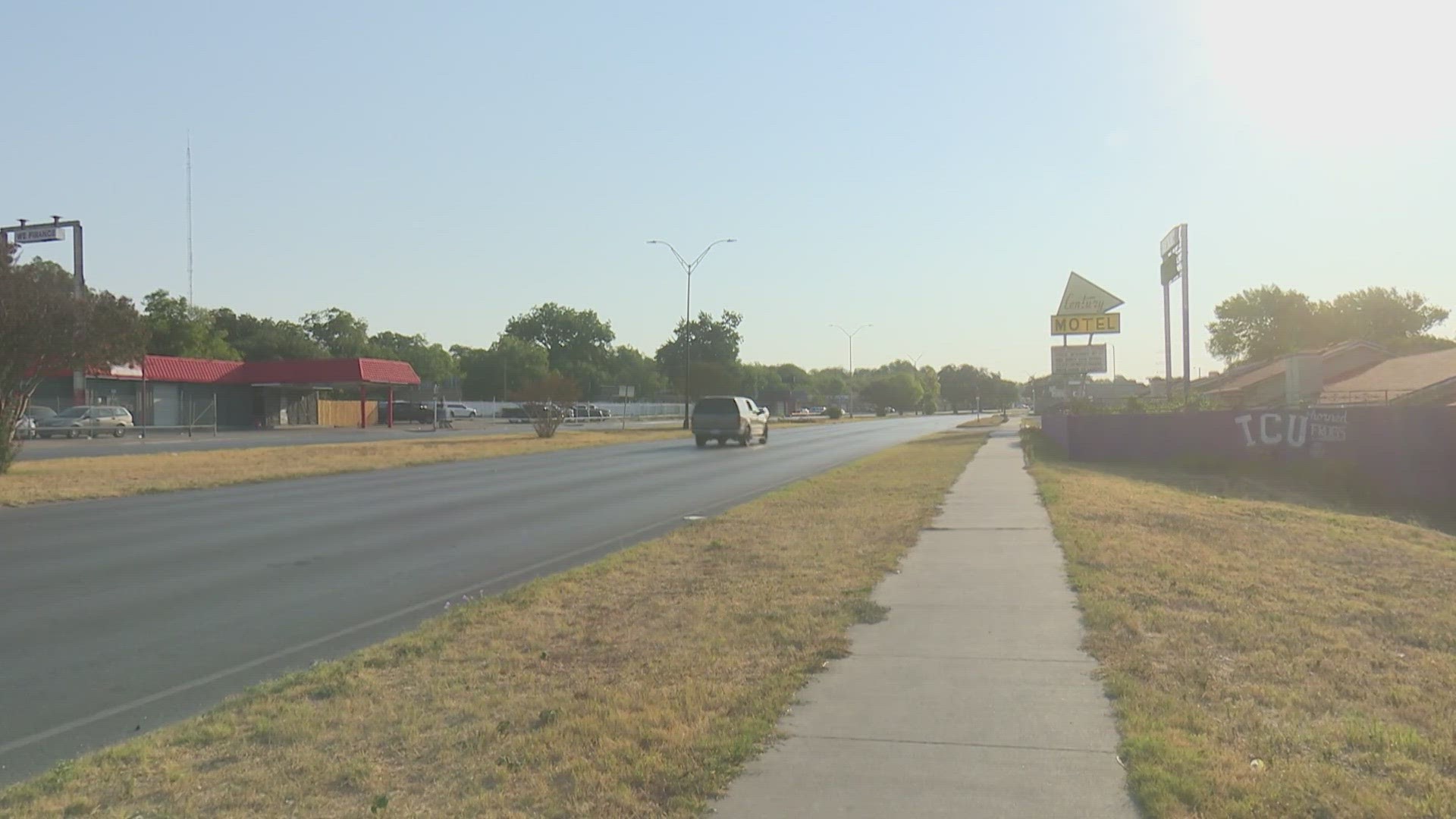FORT WORTH, Texas — A transportation project designed to transform East Lancaster Avenue in Fort Worth is now 60% funded.
The Texas Transportation Commission this month promised to allocate another $25 million to the idea. Local, state, and federal entities have so far committed $111 million to the project, which the North Central Texas Council of Governments (NCTCOG) said will cost $182 million.
Workers would reconstruct Lancaster Avenue from Pine Street to Interstate 820, making the corridor safer and more useful for bikers and walkers. Engineers have not yet decided what the final project will look like, though stakeholders have discussed adding dedicated lanes for mass transit, bigger crosswalks and high-tech stop lights.
"Right now, that's a roadway where you feel like you've gone back in time," NCTCOG senior program manager Jeff Neal said. "The idea is to find a way to make that corridor more conducive to the kind of activities the community really wants for that area."
Neal and others believe the infrastructural investment will lure developers who've mostly ignored the area for decades.
"You'll have a corridor that looks and functions so much different than it does today," Neal said. "It's something tangible that can make developers say, 'That's really something.'"
For decades, Lancaster Avenue was the primary connector from Dallas to Fort Worth. The road was also part of Bankhead Highway, considered the nation's first paved highway to stretch from coast-to-coast.
"The history of East Lancaster is very auto-centric," said Dan Haase, who lives off the road in the Central Meadowbrook neighborhood. "It doesn't serve that purpose anymore."
Motels and bars that thrived during the Bankhead Highway's heyday still line Lancaster Avenue. Signage along the road reflects the time period.
But, long-hauling patrons stopped using the corridor and patronizing nearby stores when Interstate 30 opened as a turnpike in 1957.
Traffic on Lancaster Avenue slowed, but its six lanes remain ill-fitted for pedestrians who live in the surrounding neighborhoods.
"It hasn't changed a whole lot," said Haase, who's lived in the area for 40 years. He jokes that when the road becomes less important, it will become more useful.
"I want to write that chapter," he said. "Let this be more of a street that serves the neighborhood than serves the motoring public that no longer uses this route."
Stakeholders have the resources they need to move forward with pre-construction activity on schedule, Neal said. Workers could begin rebuilding the road as early as 2026, he added.
"If we can get that (remaining) money, we're ready to go," Neal said.

